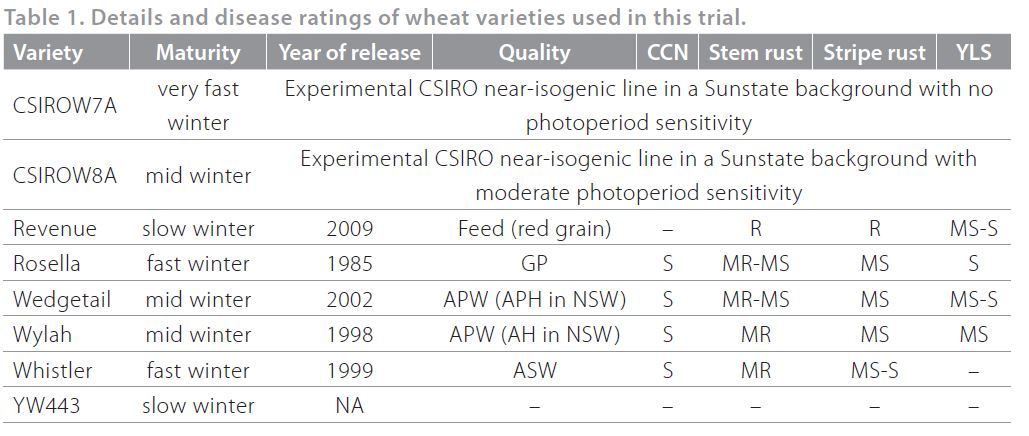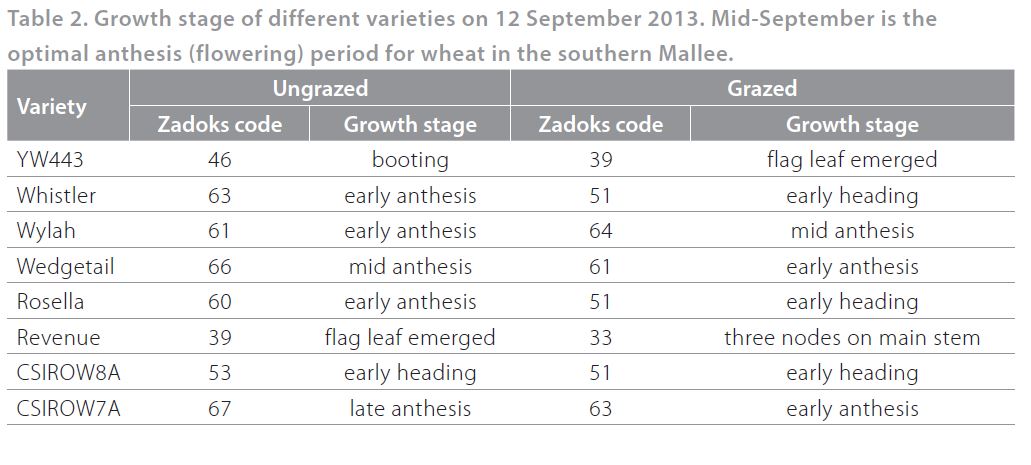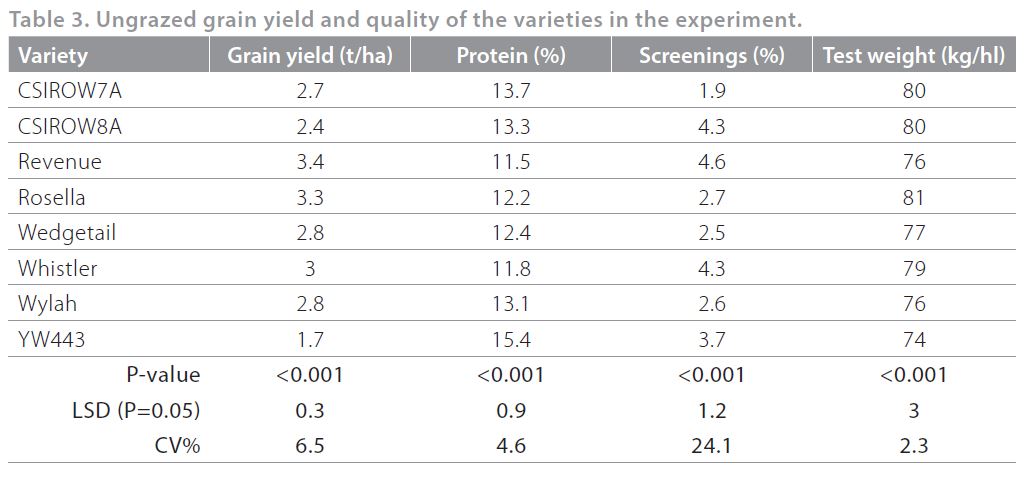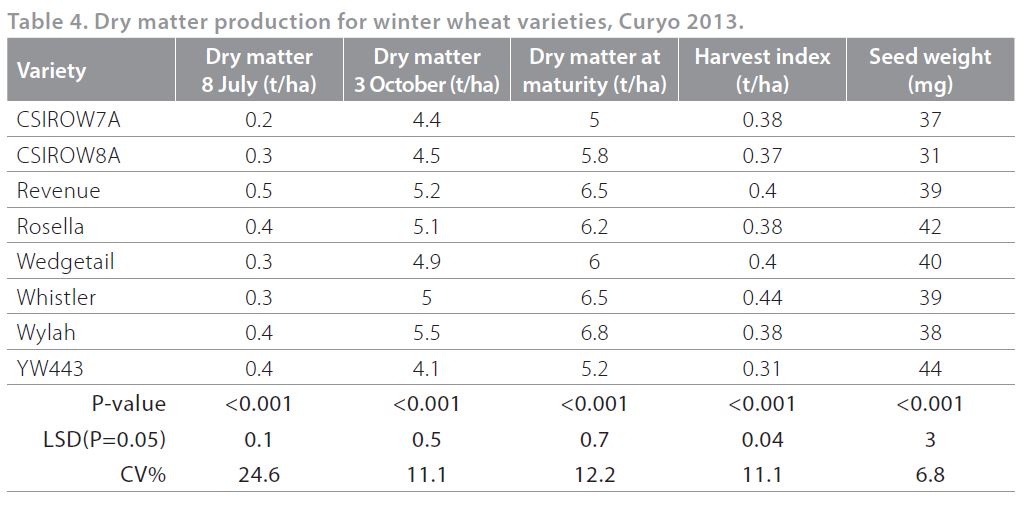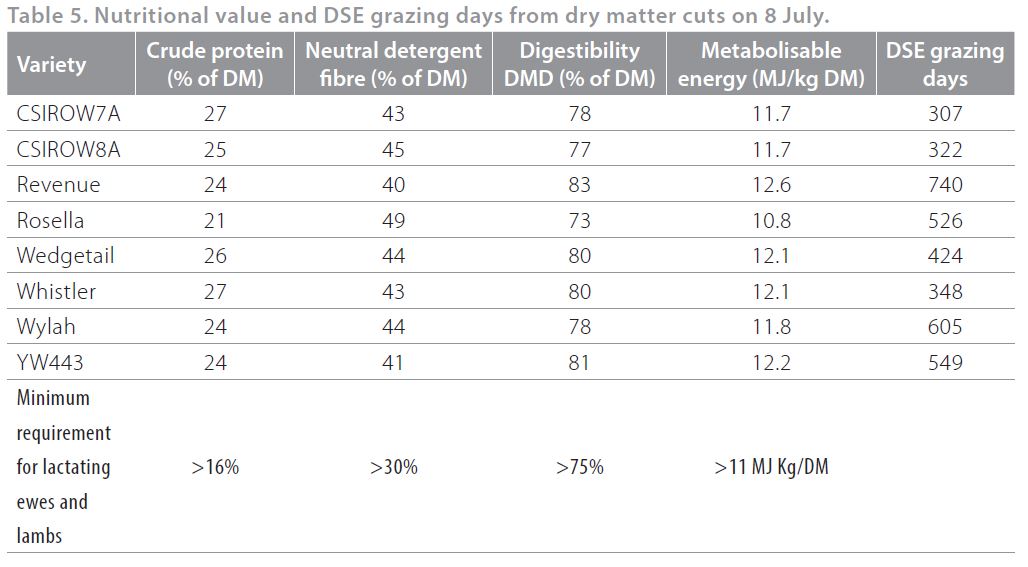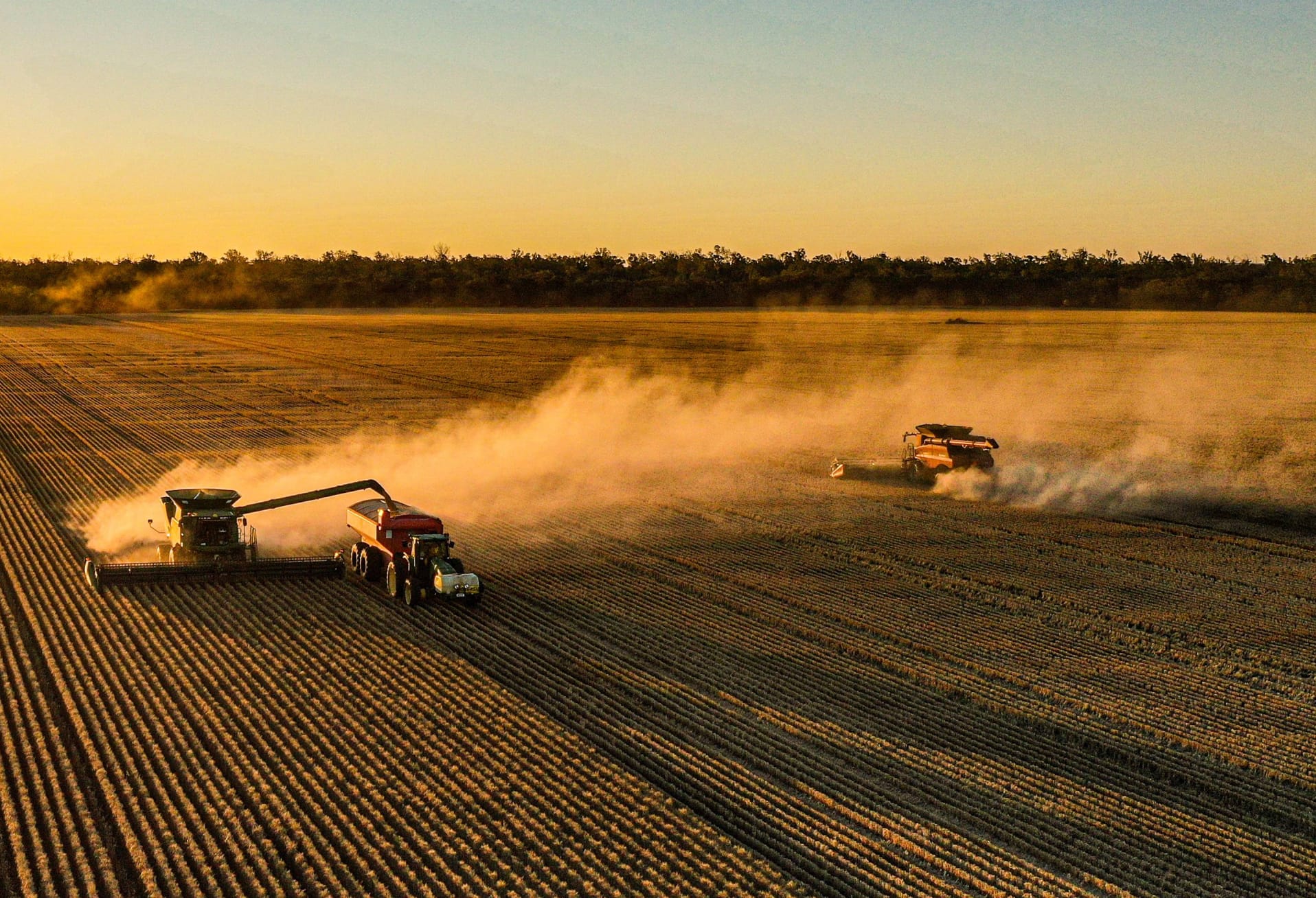The amount of April to May rain the Mallee receives has declined over the last decade (Groundcover, November 2, 2012), making it difficult to establish spring wheat crops at the traditional time. Winter wheat varieties (such as Wedgetail and Rosella) have a vernalisation requirement: they need to be exposed to low temperatures (4-18°C) for a certain period of time before spike development and stem elongation (GS30) can begin. This means that though winter wheat varieties can be sown much earlier than spring wheats (as early as late-February), they do not flower too early and risk exposure to
frost. Because of this, winter wheats have a more flexible sowing window (from March to early May) than spring wheats, which have an optimal window of about two weeks in the first half of May. Winter wheats also spend much longer in the tillering phase prior to GS30, and if used as a dual purpose crop can be safely grazed for longer than spring wheat.
Unfortunately, Australian breeding programs stopped selecting for milling quality winter wheats early last decade. There are very few cultivars available, particularly for medium-low rainfall zones with alkaline soils.
In mid February 2013, a storm delivered 54mm of rain to the Curyo district north of Birchip. This turned out to be the only establishment opportunity until late May. The aim of this experiment was to discover how winter wheats performed when sown in response to late summer rain. Such a strategy may prove to be an adaption to reduced April to May rainfall, one which may improve grain yields by optimising flowering time, and also fill the feed-gap caused by dry autumns.
A similar experiment in 2012 (BCG 2012 Season Research Results, pp. 23-26) found that winter wheats were necessary to take advantage of such early sowing opportunities as even very slow maturing spring wheats (such as Bolac and Forrest) flowered too early. It also found that the best winter lines could yield as well as spring wheat varieties when dry-sown in May, and out-yield spring wheat sown after the break in June. However, the winter wheats used showed poor adaptation to alkaline soils, having no resistance to CCN, boron or salinity. This experiment aimed to evaluate a wider range of winter wheat lines to discover whether any were suitable for growing in the Mallee.
TAKE HOME MESSAGES
- Winter wheat can be sown as early as February, flower at the optimum time and yield as well as spring wheat sown in May.
- Winter wheat provides lots of feed for livestock if used as a dual purpose crop.
- The Mallee needs adapted winter wheat varieties bred for it!
AIM
To compare the early grazing and yield potential of winter wheat varieties sown very early in response to summer rain.
TRIAL DETAILS
Location: Curyo
Replicates: Four
Sowing date: 26 February
Target plant density: 65 plants/m² for YW443 and 100 plants/m² for all other varieties
Wheat varieties: CSIROW7A, CSIROW8A, Revenue, Rosella, Wedgetail, Wylah, YW443 and Whistler
Fertiliser:
at sowing – MAP Granulock supreme Z treated with Impact @ 30kg/ha
9 July – Urea @ 90kg/ha (46%N)
20 August – Urea @ 180kg/ha
Herbicide:
at sowing – Sakura @ 118g/ha + Avadex Xtra @ 2L/ha
1 July – Velocity @ 670ml/ha + MCPA LVE @ 350ml/ha + Hasten (1%)
Fungicide: Impact (400ml/ha) at sowing plus Prosaro (150ml/ha) + Spreadwet (0.25%) on 28 August
Insecticide: Alpha Duo @ 200ml/ha on 23 September
Grazing: 8 July (all at late tillering, pre GS30)
Seeding equipment: BCG parallelogram cone seeder (knife points, press wheels, 30cm row spacing)
This trial was sown on chickpea stubble (starting N status 83kg/ha) with starting sub-soil moisture of 75mm PAW, which included 54mm of rain that fell on 14 February. Four replicates of each variety were mechanically defoliated on 8 July to simulate grazing. Dry matter production was measured at this time. Grain yield was measured using a small plot harvester, and all grain samples collected for further analysis. Grain yields were adjusted to 11.5 per cent (%) moisture for the statistical analysis of results.
RESULTS AND INTERPRETATION
Plants emerged evenly by early March and initially grew well on stored soil moisture present at the site. However, towards the end of March, the plants began to show signs of moisture stress which worsened until breaking rains fell in late May. With crops recovering and growth slow until a more significant rainfall in June (Figure 1), the first grazing was unable to be completed until 8 July.
Across the region, frosts (defined as air temperature below 2°C) were recorded up until late October, with a large amount of damage suffered by a number of crop types in the Wimmera and Mallee regions. At the Curyo site, 41 frosts and 18 heat stress days were recorded throughout the year (Figure 2), but this had no apparent effect on the winter wheat varieties.
All varieties matured differently, with YW443 and Revenue being the last two varieties to reach anthesis (Table 2). Varieties that had not been grazed were slightly more advanced than those that had, with the exception of Wylah and CSIRO W7A, where grazing seemed to accelerate development. Whistler, Wylah, Wedgetail and Rosella all flowered in mid-September, which is the time most optimal for yield potential in the southern Mallee (i.e. at the same time as a spring wheat such as Scout sown in late April or early May).
Revenue and Rosella achieved the highest yields, followed by Whistler, Wedgetail and Wylah (Table 3). There was no varietal interaction with grazing which, on average, reduced grain yields by 0.3t/ha. The yield of Revenue was particularly impressive given its late flowering.
Kord wheat in the paddock surrounding the trial (sown on 18 May) averaged 3.6 t/ha (range: 3.0-4.4t/ha). This further supports trial results from 2012 which showed that winter wheats sown on summer rain in the Mallee could achieve yields equivalent to those of spring wheats sown later. This is despite the fact that all available winter wheat varieties are ageing and/or poorly adapted.
All varieties achieved the protein, screenings and test weight specifications required to meet their maximum quality segregation; Wylah and Wedgetail could have been delivered into NSW as H1 and H2 respectively. Protein significantly increased when varieties were grazed (average 0.3%) due to the linear relationship between protein and yield (as one decreases the other increases).
There was a significant difference between the dry matter produced by the varieties examined at all measurement stages (Table 4). At the time of grazing (8 July), Wylah, Rosella and Revenue recorded the highest dry matter available to be grazed (Table 4). In early October (when crops could have been cut for hay) Wylah, Rosella and Revenue again recorded significantly higher biomass than the other varieties.
YW443 measured a significantly lower harvest index than the other varieties. This is mainly due to it being significantly the lowest yielding variety, as shown in Table 3. It is a Chinese winter wheat with clearly very poor adaption to the Mallee!
Tissue tests conducted on dry matter cuts taken on 8 July indicated that all varieties, with the exception of Rosella, had adequate nutrition to meet the minimum requirements for lactating ewes and lambs (Table 5). Revenue and Wylah would have been able to sustain the greatest number of grazing days.
COMMERCIAL PRACTICE
This experiment shows great potential for early sown winter wheats in the Mallee. Winter wheat varieties have the potential to reduce the impacts of dry autumns by ensuring more crop flowers on time, and stock can be adequately fed during the late-autumn early-winter feed gap.
Winter wheats can be sown from late February through to ≈20 April, at which time our better adapted longer season spring wheats (Yitpi, Phantom, Harper, Magenta) will start to out-perform them. Yield of winter wheat is probably maximised when sown in the first half of April, but sowing earlier is desirable if grazing of the crop is planned. If planning to graze aim for optimum plant densities of between 100-150 plants/m²; if not, plant densities of 60-80 plants/m² are adequate. The earlier crops are sown, the more soil water they require to keep them alive until winter.
This experiment showed that ≈70 mm was adequate in late February, and 25 mm is probably adequate in early April.
Although there is currently no perfect Mallee-adapted winter wheat variety in existence, several of the varieties examined in this trial are suitable for growers wishing to try this practice commercially.
Revenue has good resistance to foliar disease, provides the most autumn and winter grazing (can be grazed into August), and has shown that it is able to yield well even in a tough finish. Seed is readily available from south west Victoria, where it is a very popular variety. It is a red-grained feed wheat: grain needs to be either used on-farm, or delivered directly to an end-user (dairy cows, chicken etc.) or to south west Victoria where red grained feed wheat trades at a $20-30 premium over white grained feed wheats as SFW1. It is an awnless variety; if cut for hay, it is more readily marketable.
Wedgetail, Whistler and Wylah are all still commonly grown in southern NSW, and Wedgetail seed is readily available commercially. These three varieties need to be managed for stripe rust. Grazing can assist with early infection but a GS39 foliar spray is also required. Wedgetail and Wylah are classified APW in Victoria, but have good grain quality (APH and AH respectively in NSW) they could potentially be marketed into higher grades.
Rosella performed well in both 2012 and 2013 trials, but is also susceptible to stripe rust. It does not attract an end-point royalty, but is still grown in the Wimmera. However, it has lost its ASW-noodle segregation and can now be delivered only as GP (general purpose).
All varieties tested are susceptible to CCN and sub-soil constraints; avoid sowing them in paddocks where these are likely to be an issue. Barley yellow dwarf virus can severely reduce yield of early sown crops, and it is recommended that seed be treated with imidicloprid (Gaucho®) and crops monitored for aphids (a foliar spray is also sometimes required). If grazing, make sure that stock are removed prior to GS30 to minimise the chances of a yield penalty. This occurs much later for winter wheats than for spring wheats.
REFERENCES
GRDC, 2012, ‘Expanding sub-tropic zone the clue to dry autumns’, Groundcover, Issue 101, accessed at: https://www.grdc.com.au/Media-Centre/Ground-Cover/Ground-Cover-Issue-101/Expanding-subtropiczone-the-clue-to-dry-autumns
ACKNOWLEDGMENTS
This project is supported by the GRDC’s Northern Victoria Grain and Graze 2 (GRDC project BWD00018) and Caring for Our Country, and Increasing yield and reducing risk through early sowing in the Southern grains region (GRDC project CSP00178).
